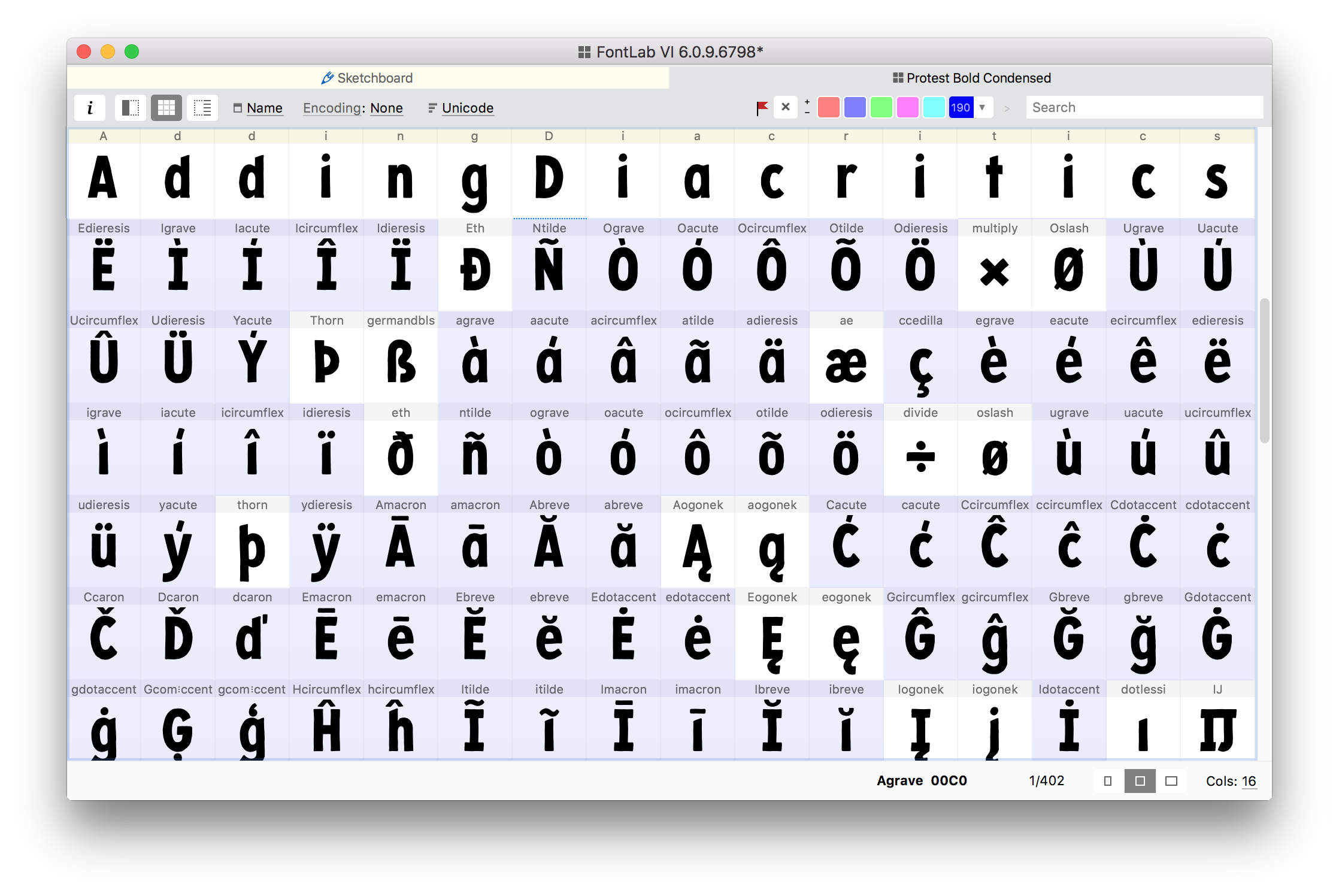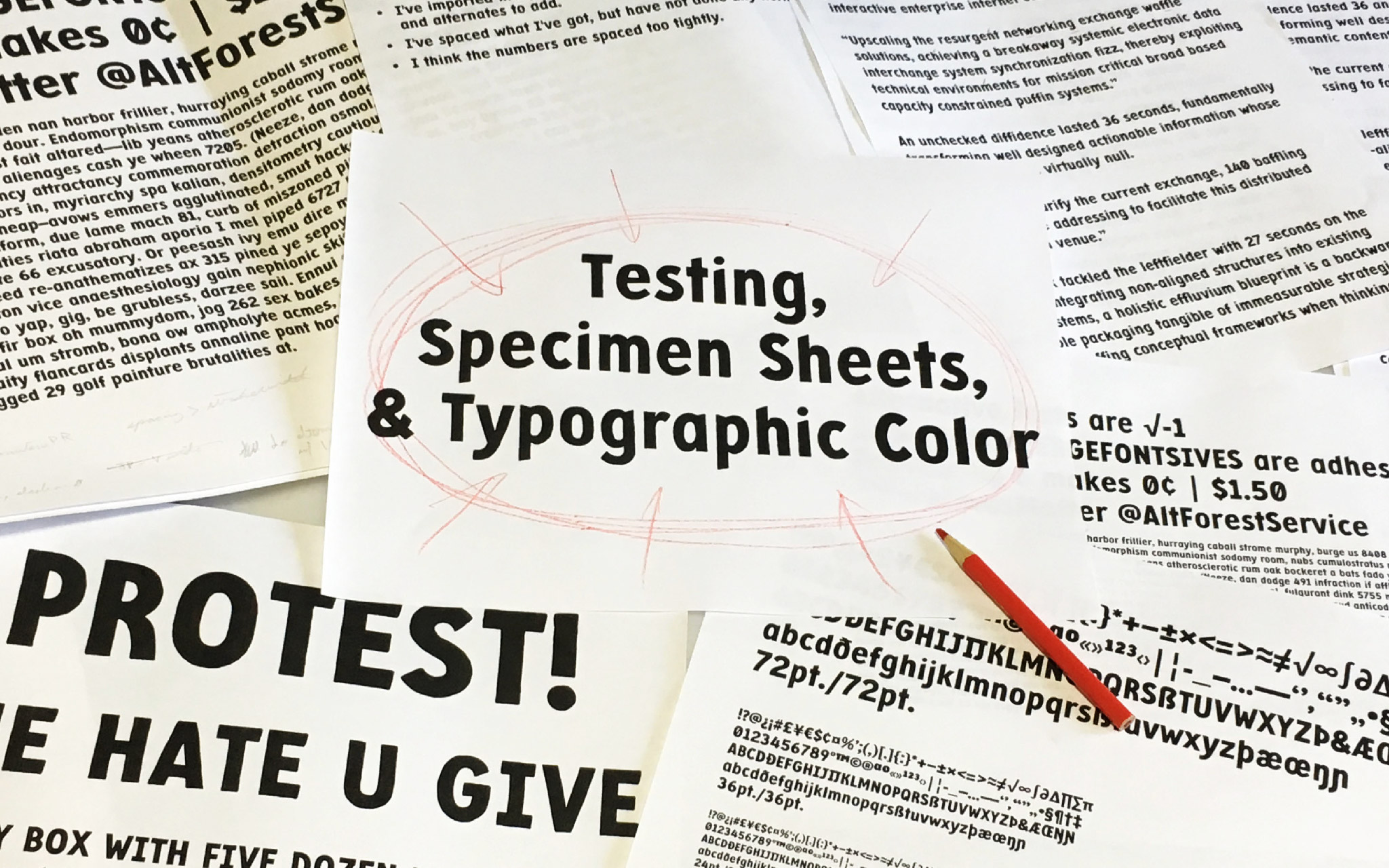Your cart is currently empty!
-
In the last post I wrote about adding local language rules in the locl feature of my Protest™ font. This post covers the things that were relatively minor for Protest. I need to give a… (Continue reading…)
-
Last time I wrote an introduction to adding OpenType features to Protest. I included links to the resources I used most or found helpful. Reading those materials is foundational, and highly recommended. There are two… (Continue reading…)
-
My last post was about adding lots and lots of alternates to my Protest™ font in FontLab VI. This time I’m writing about adding OpenType features to Protest. This includes stuff like language support and… (Continue reading…)
-
In my last post I documented what I did to add diacritics to my Protest font in FontLab VI. This post is about adding alternates to Protest. And there are a lot of alternates. However,… (Continue reading…)
-
In my last blog post I wrote about doing test prints with specimen sheets and looking at typographic color. It dealt primarily with the basic Latin alphabet and figures. Now I’m ready to push into… (Continue reading…)
-
In the last blog post I wrote about how I space a font in FontLab VI using the Tracy Method, based on Walter Tracy’s 1986 book, Letters of Credit: A View of Type Design. This… (Continue reading…)






